Balenciaga has opened an exclusive archival exhibition in Sydney, a moment that signals both cultural intent and market confidence. The house has paired the unveiling of its largest Australian flagship with a rare presentation of couture pieces by Cristobal Balenciaga. The result is a two level experience that moves from retail to reflection, from the current collections on the main floor to a quiet salon devoted to history above. It is not only a store opening. It is a statement of legacy, presence, and the value of craft.
A Salon of Memory Inside the City
Visitors enter a purpose built gallery space that has been designed to slow the pace of the day. The lighting is soft and precise, the room arranged so that each silhouette can be read without distraction. The exhibition title, The Woman Behind the Dress, invites a simple and human approach to couture. These are not museum pieces held at a distance. They are portraits of women told through proportion, line, and fabric. The mood is calm and reverent. The language is silhouette and movement rather than spectacle.
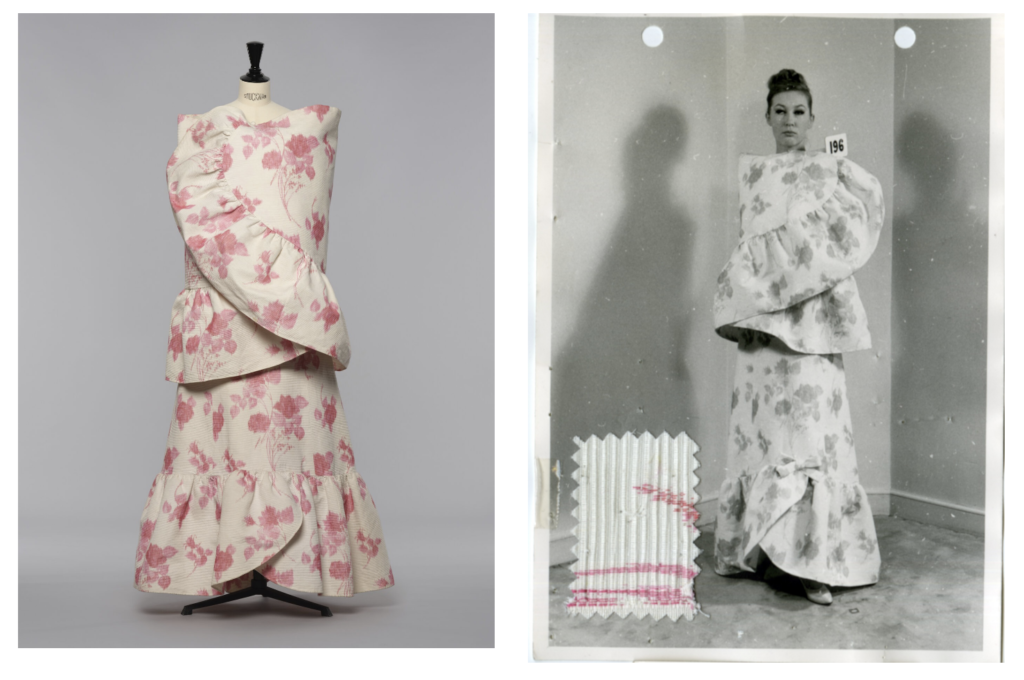
Six ensembles anchor the presentation. A black velvet evening dress created for Grace Kelly brings the room to attention with sculptural ease. A white silk suit made for Marlene Dietrich speaks of confidence through purity and cut. Pink satin with black lace for Annabel Buffet shows how romance can be structured without losing power. Two evening looks for Francine Weisweiller, a close friend of many artists and writers, show Balenciaga’s instinct for private glamour rather than public display. A red organza gown created for Helene Abecassis demonstrates how color becomes volume when handled by a master. Seen together, these garments read like a small symphony. Each carries a distinct voice, yet all belong to the same house.
The Hand and the Eye
Cristobal Balenciaga worked with a philosophy that continues to shape modern fashion. He believed that design begins with architecture. He built garments from the inside out, thinking in volumes and airflow, not decoration. Seam placement served structure. Fabric was treated as a living material. The body was given room to move and breathe. This approach created a new kind of elegance, one that did not rely on excess but on discipline and line.
In the Sydney salon, that method is easy to observe. The velvet of Grace Kelly’s dress absorbs light until only contour remains. The white silk of Dietrich’s suit reflects light so that edges read like strokes of a pencil. With the red organza, the eye understands how transparency can still hold shape. Even the smallest elements, a curved seam or a hidden fastening, show intention. Nothing is louder than it needs to be. Everything is in service of form.
From Archive to Audience
Why bring an archive to a retail space. The answer lies in how luxury now speaks to culture. A flagship is no longer only a place to select an item. The most confident houses use their spaces to articulate a point of view. Balenciaga has chosen to do that with history. The ready to wear downstairs is the language of today. The archive upstairs is the grammar that shaped it. Together they create a conversation that moves beyond trend. The visitor can walk the floor, see current tailoring and accessories, then ascend to the salon and understand where that language began.
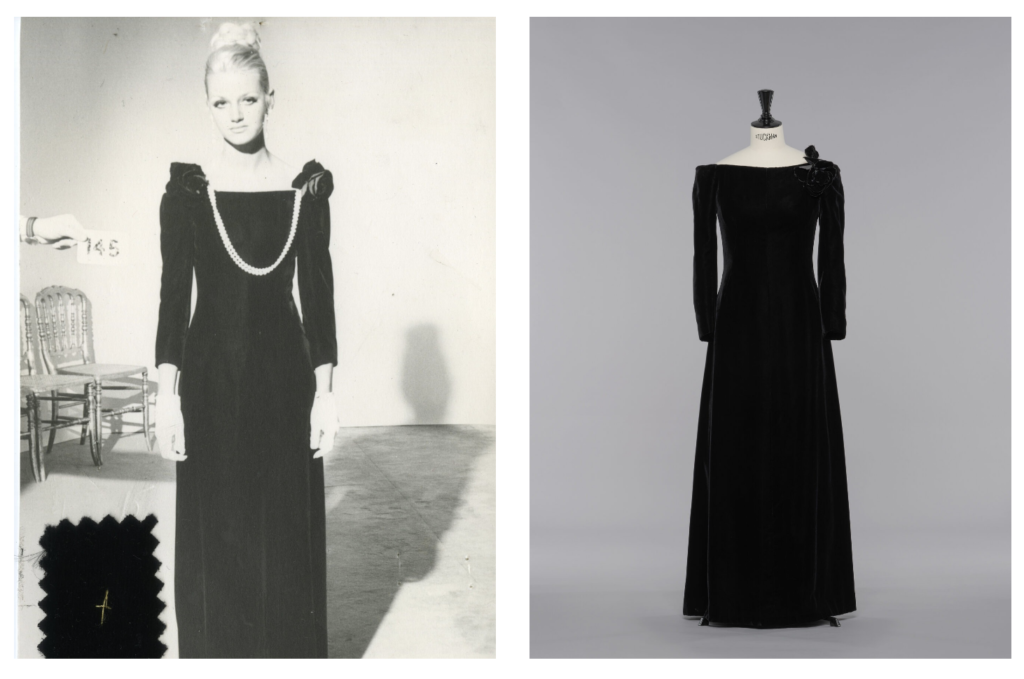
This experience matters in Australia for a simple reason. The local audience has grown more discerning. People want substance with style. They want to know what a brand stands for, not only what it sells. By staging an archival presentation in the heart of the city, Balenciaga offers access that is usually confined to a foundation or a museum. It is an invitation to look closely, to learn by observing, and to connect the present to the past through fabric and cut.
Sydney as a Cultural Setting
Sydney has become an important stage for global fashion. The city balances coastal light with a deep appetite for art and design. Its audiences visit galleries and fairs, follow architecture, and engage with craft. Positioning the exhibition here acknowledges that curiosity. It also places Balenciaga inside a network of local conversations about creativity. The setting says as much about the city as it does about the house. Luxury is not a distant object. It can live alongside daily life and still retain its meaning.
The architectural language of the flagship supports that idea. Surfaces are raw yet controlled. Materials feel honest to their function. Seating is sculptural rather than decorative. The contrast between an industrial ground floor and a quiet, near monastic upper room underscores the house’s range. Balenciaga can be contemporary and spare. It can also be ceremonial and highly crafted. The two sides meet under one roof.
Reading the Garments
Take a closer look and the lessons multiply. The velvet dress associated with Grace Kelly expresses volume without weight. The skirt falls in a single continuous gesture, neither heavy nor fragile. The bodice respects the lines of the ribcage rather than forcing it. Movement is anticipated and welcomed. The white suit connected to Marlene Dietrich is severe at first glance, but the severity dissolves when the arm bends or the wearer turns. Balenciaga built ease into discipline. He allowed posture to complete the design.
In the red organza, color is not ornament. It is structure. Layer over layer creates a soft architecture that catches light at different depths. The eye moves across the surface the way it moves across a city at dusk. The pink satin and black lace, ready to be mistaken for romance alone, is actually an exercise in control. The lace frames, the satin carries, the whole remains balanced. The evening dresses for Francine Weisweiller speak of intimacy. These are not public gowns meant for a stage. They are private companions for a particular night. The message is clear. Couture is not a costume. It is a relationship between a person and a form.
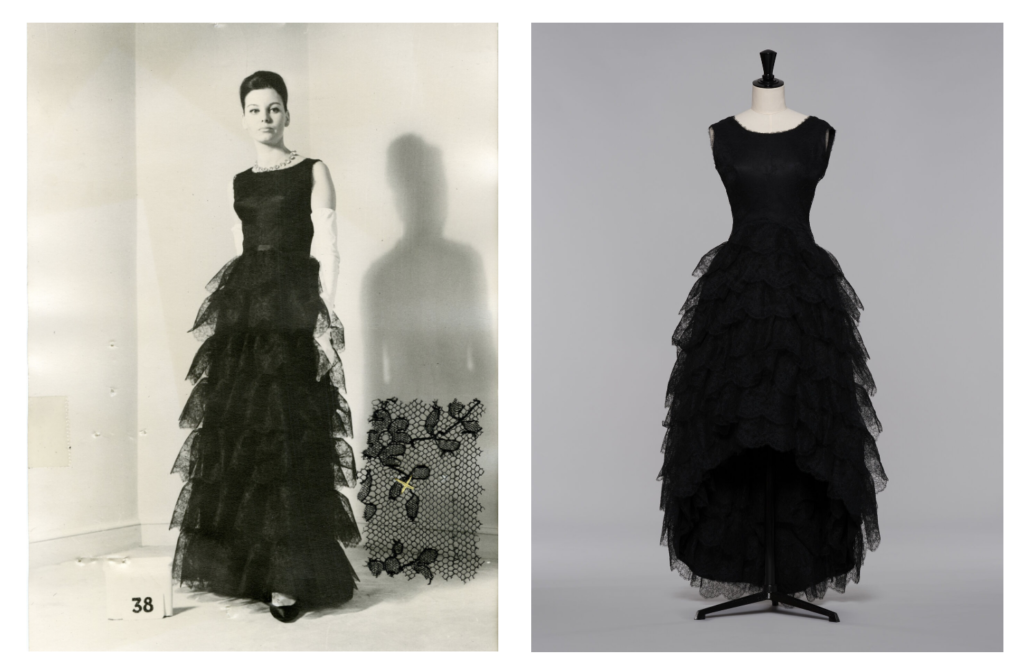
Craft as a Contemporary Value
The exhibition arrives at a time when craft has regained cultural weight. People are asking how things are made and who makes them. They want durability, precision, and a sense of care. Balenciaga’s archive answers those questions with quiet confidence. Every stitch, seam, and fold has purpose. The garments endure not because they are protected in storage, but because they were built with respect. The house is reminding its audience that quality is not a word. It is a practice.
That reminder also reframes modern luxury. The value of an object does not come from scarcity alone. It comes from the work embedded in it, from the years of training behind a technique, from the discipline of a studio where ideas are tested day after day. When visitors see the archive in Sydney, they witness that discipline. They witness how constraint can be generous, and how restraint can be expressive.
Education Through Experience
Although the exhibition is intimate in scale, it functions as a teaching space. The curation moves from dark to light, from volume to line, from evening to day. Captions place each work in time and in a personal context. The effect is to humanise couture. We see a lineage of creativity that passes through a house, into the hands of clients, and outward into culture. People who come with curiosity leave with knowledge. People who arrive for a quick visit often stay longer than planned. That is a sign of an effective exhibition. It changes the tempo of the viewer.
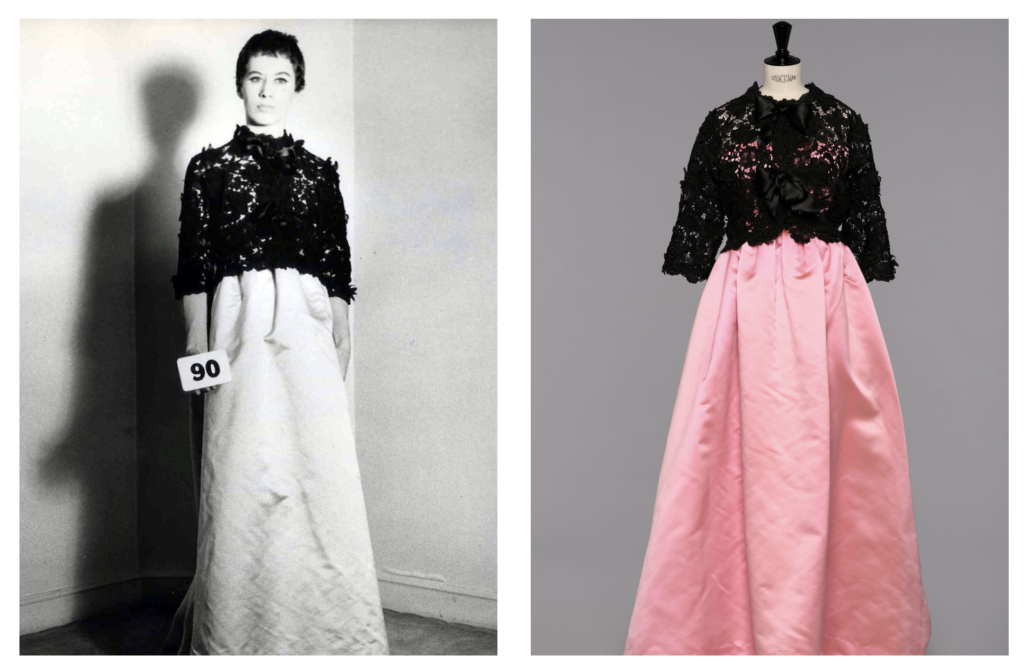
A Bridge to the Present
What does this mean for Balenciaga today. A house earns relevance when it carries its history forward with clarity. Presenting heritage in a living city, alongside current collections, shows belief in continuity. It also suggests a future that values silhouette and construction as much as image. The message is not nostalgic. It is directional. The archive becomes a north star rather than a museum wall.
For Sydney, the presentation is equally meaningful. It signals that global fashion sees the city as a serious audience for culture, not only for commerce. It strengthens a growing pattern of exhibitions, talks, and collaborations that tie international houses to local communities. It also serves as a model for how retail can behave when it aims higher than transaction. A store can be a public room. A brand can be a cultural partner. A visit can be time well spent.
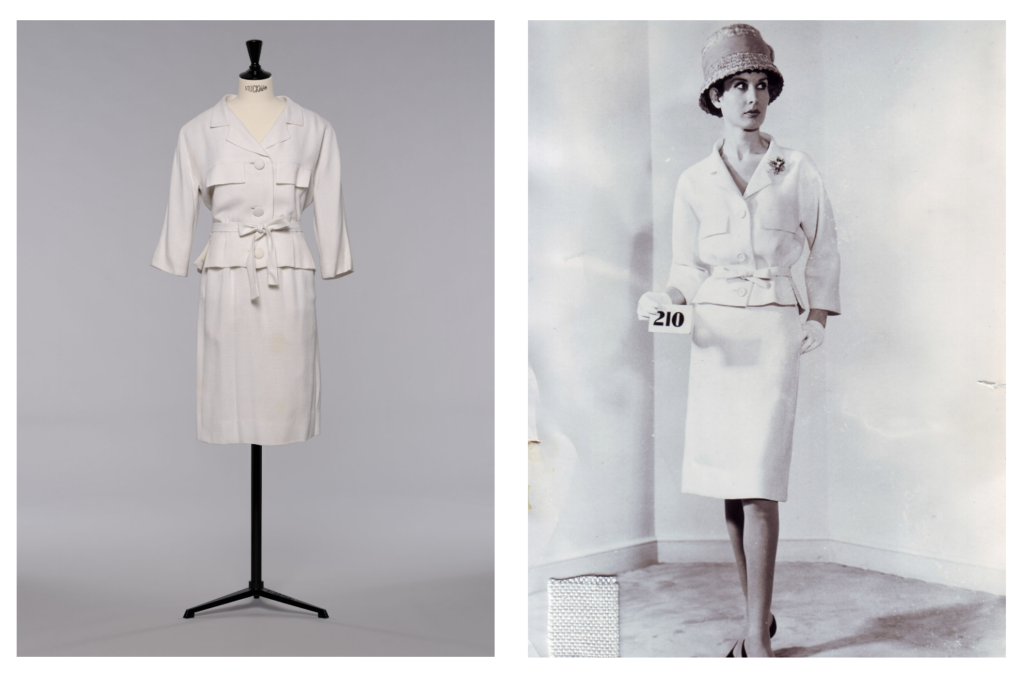
A Closing Reflection
Standing in front of the black velvet, the white silk, the pink satin, one hears the same quiet idea repeat in different voices. True elegance does not demand attention. It earns it. Form is more persuasive than noise. Line is more memorable than ornament. A dress holds power when it respects the person who wears it. This is why an archival exhibition can feel so current. It reminds us that standards do not expire. They are either honoured or ignored.
Balenciaga has chosen to honour them in Sydney. The house has given the city a room where time slows and craft speaks. It has offered a bridge between women who once wore these clothes and people who look at them now. It has placed legacy in the path of daily life and trusted that the audience would meet it with interest. That trust feels well placed. The room is quiet. The clothes are eloquent. The conversation will continue after the doors close.
Written by: Linh Giang Nguyen
Published on: 3rd Nocvember 2025